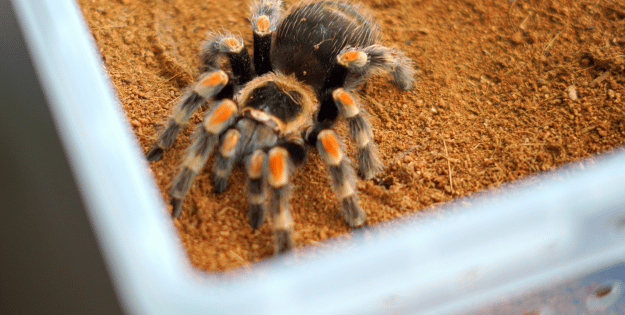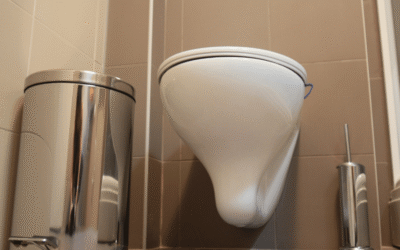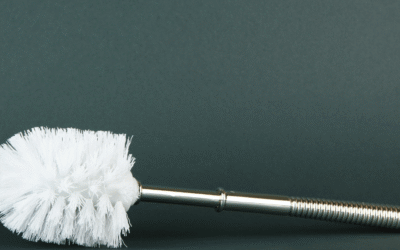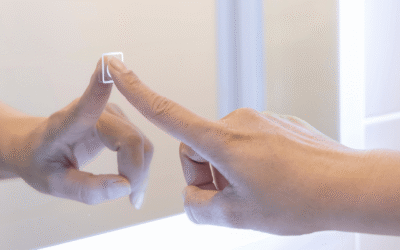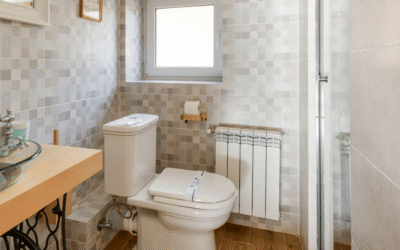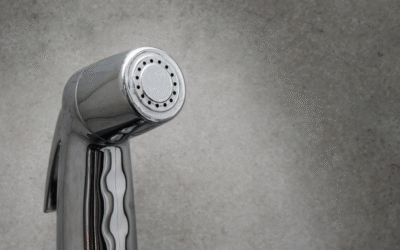Selecting the best tarantula enclosure is crucial for ensuring the safety and comfort of these fascinating creatures. With their reputation as escape artists, it’s vital to choose an enclosure that balances security with the ideal environment for growth and wellbeing. From spacious glass tanks to custom DIY creations, the options are as diverse as the species themselves.
Proper ventilation, size, and material are key factors in choosing the right home for a tarantula. Enclosures must provide ample space for movement and effective air circulation to maintain a healthy habitat. Acrylic containers and specially designed terrariums are popular choices, offering durability and ease of access for caretakers.
For those who enjoy a hands-on approach, building a DIY tarantula enclosure can be both rewarding and budget-friendly. By crafting a personalised habitat, enthusiasts can ensure their tarantula’s specific needs are met while adding a unique touch to their pet’s home.
Top Amazon Sellers
Key Takeaways
- Choosing the right tarantula enclosure ensures safety and comfort, with key considerations including size, ventilation, and material.
- Glass and plastic enclosures are popular for their durability, visibility, and ease of maintenance, while DIY options offer personalised and budget-friendly solutions.
- Proper setup with appropriate substrate, furnishings, heating, and humidity levels is critical to replicate a tarantula’s natural environment.
- Secure lids with locking mechanisms are essential to prevent escapes, enhancing the safety of the enclosure.
- Regular maintenance, cleaning, and monitoring of temperature and humidity ensure a healthy habitat, promoting the longevity and wellbeing of your tarantula.
Choosing the Best Tarantula Enclosure
Selecting an ideal enclosure is crucial for spider health and comfort. Consider factors like enclosure size, ventilation, and material choice to ensure a safe habitat.
Size Considerations
A spacious enclosure ensures comfort for tarantulas. Provide ample space so they can move freely, reducing stress. Factor in the growth potential of the species, as even smaller spiders may outgrow their enclosure quickly.
Ventilation and Airflow
Proper ventilation is necessary for a healthy environment. Ensure adequate airflow to prevent mould and other issues. Use enclosures with secure but breathable covers that allow for circulation while keeping the spider inside.
Material and Durability
Choose durable materials for long-term use. Whether glass, plastic, or acrylic, the material must withstand tarantula behaviour. Safety is paramount; avoid enclosures with sharp edges or weak points that could lead to escapes.
Popular Types of Tarantula Enclosures
Choosing the best tarantula enclosures involves evaluating several types to meet specific needs. Key options include glass, plastic, and DIY methods.
Glass Terrariums
Glass terrariums are favoured for their clear visibility and durability. These enclosures often feature front-opening doors and ventilation systems. They’re ideal if aesthetic appeal is important, although ensuring adequate heating is essential due to their heat retention challenges.
Plastic Enclosures
Plastic enclosures offer affordability and ease of customisation. Lightweight and easy to maintain, they’re ideal for beginners. These enclosures are efficient to heat, making them suitable for maintaining optimal temperatures. Secure lids and ventilation are key factors to consider.
DIY Options
DIY tarantula enclosures provide cost-effective and personalised solutions. Enthusiasts can design habitats reflecting their creativity while meeting specific tarantula needs. By gathering basic materials such as acrylic or plastic, one can build a functional and customised home for their pet.
Tips for Setting Up Your Tarantula Enclosure
Selecting an enclosure isn’t enough; setting it up correctly is vital too. A well-prepared habitat ensures your tarantula’s health and mimics their natural environment.
Substrate and Furnishings
Use soft, moisture-retentive substrate like coconut fibre or peat moss. Add furnishings such as hides and artificial plants, offering hiding spots and enrichment. Ensure furnishings won’t obstruct ventilation and are free of sharp edges, avoiding injury risks.
Heating and Humidity
Maintain suitable temperatures, generally between 21-27°C. Use thermostatically controlled heaters to provide consistent warmth. Humidity should reflect the tarantula’s natural habitat, with tropical species requiring higher levels, supported by misting or humidity-retentive substrates.
Secure Lid and Safety Measures
Install a tightly fitting, secure lid with a locking mechanism to prevent escapes. Regularly inspect for potential weak points or damage. Consider using fine mesh screens, ensuring proper airflow while keeping your tarantula safely enclosed.
Maintenance and Care of Tarantula Enclosures
Proper maintenance and care of tarantula enclosures ensure a safe habitat for your pet. Effective cleaning and monitoring are crucial aspects of their care routine.
Cleaning Tips
Regular cleaning of tarantula enclosures prevents waste and bacteria buildup. Replace substrate periodically and wash decorations with mild soap and water. Carefully maintaining cleanliness preserves the health of your tarantula, contributing to the longevity of the best tarantula enclosures.
Monitoring Conditions
Temperature and humidity in tarantula enclosures directly affect their health. Use a thermometer and hygrometer to keep conditions stable. Optimal levels depend on the species, so research specific needs. Effective monitoring keeps the habitat safe, ensuring a stress-free environment for the tarantula.
Conclusion and Top Picks
Choosing the right tarantula enclosure is vital for their health and comfort. With options like glass terrariums, plastic enclosures, and DIY creations, enthusiasts can find or build the perfect habitat. Prioritising factors such as ventilation, size, and material ensures a safe and stress-free environment. Proper setup and maintenance further enhance the wellbeing of these fascinating creatures. By considering these elements, tarantula owners can create a thriving habitat tailored to their pet’s needs.
Frequently Asked Questions
Why is selecting the right enclosure important for tarantulas?
Choosing the right enclosure is crucial for a tarantula’s health and comfort. A spacious habitat reduces stress and supports growth, while proper ventilation ensures a healthy environment by preventing mould. Durable materials like glass or plastic provide safety by withstanding the tarantula’s behaviour. Additionally, secure yet breathable covers prevent escapes, protecting both the tarantula and the household.
What are the benefits of DIY tarantula enclosures?
DIY enclosures allow enthusiasts to tailor habitats to meet specific needs of their tarantulas cost-effectively. You can customise the size, material, and layout to suit your tarantula’s species and behaviour. This personalisation encourages growth and wellbeing, providing a secure and suitable environment that mimics their natural habitat.
How does ventilation affect a tarantula’s enclosure?
Proper ventilation is vital to prevent mould growth and maintain healthy air quality within the enclosure. Adequate airflow helps regulate humidity levels, which are important to mirror the tarantula’s natural conditions. A well-ventilated cage with secure, breathable covers ensures both the tarantula’s health and prevents potential escapes.
What materials are recommended for tarantula enclosures?
Durable materials such as glass, plastic, or acrylic are recommended for their ability to safely contain tarantulas. These materials resist damage caused by the tarantula’s activity and offer clear visibility. It is important to avoid enclosures with sharp edges or weak spots that could injure the tarantula or allow it to escape.
What substrate is best for a tarantula’s habitat?
Soft, moisture-retentive substrates like coconut fibre or peat moss are ideal as they mimic the tarantula’s natural environment. These substrates maintain humidity and provide a comfortable base for burrowing and webbing. They contribute to a stress-free enclosure setup, supporting the tarantula’s health and natural behaviour.
How should I set up the heating and humidity in a tarantula enclosure?
Maintain a temperature range between 21-27°C with appropriate humidity based on the tarantula’s natural habitat. Use a thermometer and hygrometer to monitor these conditions. Keeping a balance of warmth and moisture ensures the tarantula’s comfort and wellbeing, particularly for species from tropical climates.
What are popular types of enclosures for tarantulas?
Popular enclosures include glass terrariums, plastic enclosures, and DIY options. Glass terrariums offer visibility and durability with good ventilation, while plastic enclosures are affordable and easy to maintain, suitable for beginners. DIY setups provide customisation to meet specific habitat needs, using basic yet effective materials.
How often should I clean a tarantula’s enclosure?
Regular cleaning is essential to prevent waste and bacteria build-up. Replace the substrate periodically and wash any decorations with mild soap and water. Ensuring a clean environment reduces the risk of health issues, providing a safe and comfortable habitat for your tarantula.
Can two tarantulas share the same enclosure?
Generally, it is not advisable for two tarantulas to share the same space, as they are solitary creatures. Only a few tarantula species can cohabit peacefully under specific conditions. Ensuring individual enclosures will help in avoiding stress or conflict, maintaining the well-being of each tarantula.

